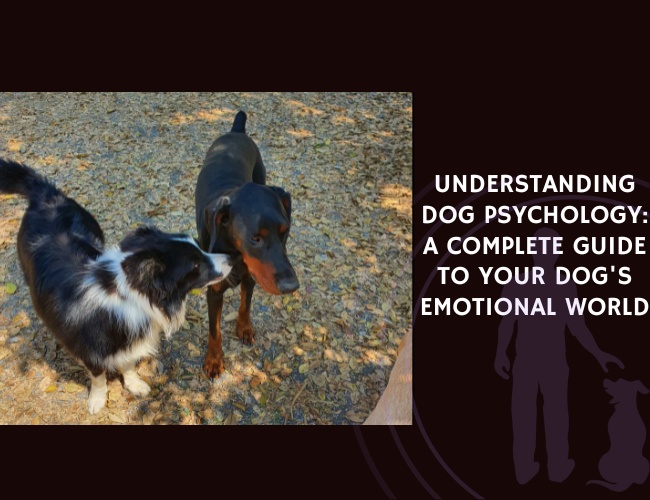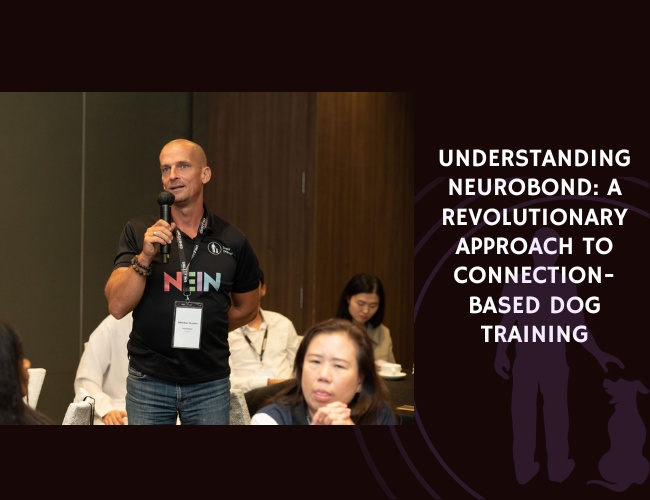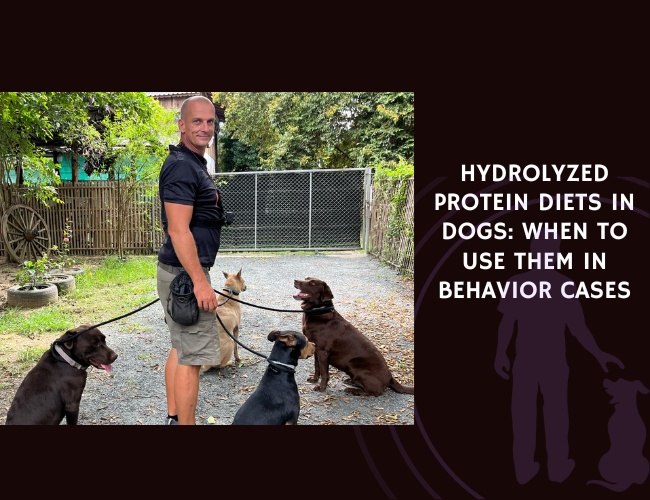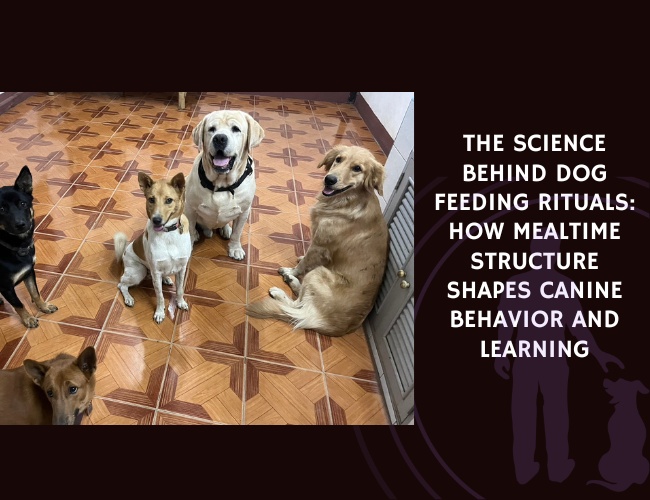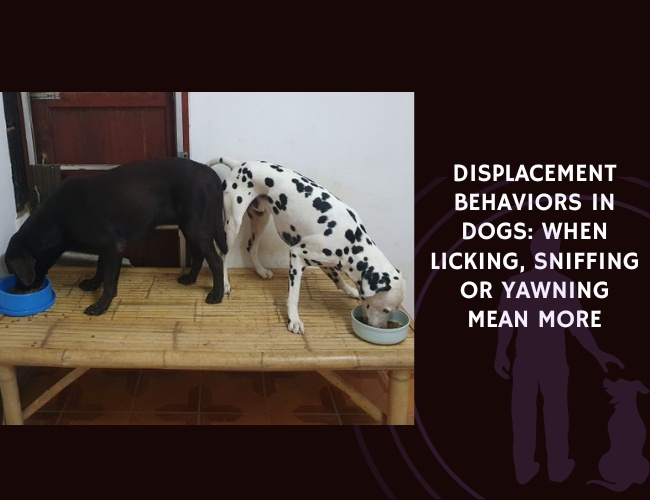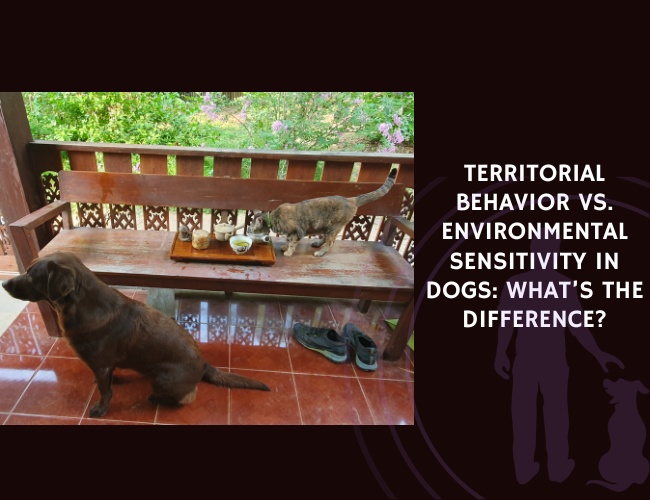Introduction to Dog Psychology
Why Your Dog’s Mind Matters
Imagine living each day with a companion who senses your moods, needs, and worries—even when you say nothing. That’s the fascinating world shared between humans and dogs. Understanding your dog’s emotional world isn’t just for trainers or behaviorists—it’s valuable for every dog owner. Why? Because gaining insight into your dog’s mind leads to a deeper bond, better behavior, and a happier life together.
Dog psychology helps you see the world through your dog’s eyes. You may find it helpful to notice when your dog is anxious, playful, or needs comfort. Recognizing these emotions allows you to respond better, whether it’s supporting a nervous pup during thunderstorms, celebrating moments of joy, or providing extra care after a stressful day. In short, learning about dog psychology gives you valuable insights and supportive guidance, shaping a more harmonious relationship.
How Science Shaped Our Understanding
The field of dog psychology isn’t new, but it has grown rapidly in the last few decades. Early ideas about dogs focused mainly on simple responses to commands or training. Over time, researchers in canine cognitive science, ethology (the study of animal behavior), and neurobiology uncovered the rich, complex minds of our furry friends.
Scientists observed that dogs learn in several ways:
- By associating experiences (classical conditioning),
- Through rewards and consequences (operant conditioning),
- And by watching others (social learning).
Research has also revealed that dogs have emotional lives, social bonds, and unique personalities. Tools like behavioral tests and observations have given us clearer pictures of what dogs think and feel.
Why This Knowledge Matters
So, how does understanding dog psychology benefit you and your pup? Here are just a few reasons:
- You’ll spot signs of stress, joy, or anxiety more easily.
- Handling behavioral issues becomes less about punishment and more about empathy.
- Training sessions are more successful—and enjoyable—for both of you.
- Overall, your dog feels safer, more understood, and loved.
Understanding your dog’s emotional life is the first step to a relationship built on empathy, respect, and trust. With this solid foundation, you’ll be ready to explore just how intelligent, sensitive, and special dogs truly are. 🐶
The Cognitive Abilities of Dogs
Understanding how dogs think gives you valuable insights into how they learn and respond to the world. Dogs aren’t just reacting—they’re taking in information, recalling memories, and solving problems in real time. Let’s break down the key skills that shape your dog’s view of life.
Learning Processes
Your dog learns through different processes, much like humans.
- Classical conditioning happens when your dog starts to associate something neutral, like a bell, with something meaningful, like food. Remember Pavlov’s famous experiment? It’s the same method you use when pairing a word like “sit” with a treat or praise.
- Operant conditioning is all about rewards and consequences. If your dog sits and gets a treat, that behavior is more likely to happen again. If jumping up means no attention, your dog learns to change that behavior.
- Social learning lets your dog pick up behaviors by watching you or other dogs. Dogs often mimic actions or look to you for cues on how to act in new situations, showing just how tuned in they are to their environment.
Memory Capabilities
Dogs have both short-term and long-term memory.
- Short-term memory helps them remember recent cues, like a command you just gave.
- Long-term memory lets them recognize family members or recall favorite spots even after a long break.
- Spatial memory is what enables your pup to find their way around the house or sniff out a toy hidden days ago.
- Object permanence means that even if you hide a treat, your dog understands it still exists and may search for it—proving a deeper level of thought than we sometimes expect.
Problem-Solving and Decision-Making
Ever seen your dog puzzle out a way to open a door or find a treat in a tricky toy?
- Dogs use problem-solving skills in situations like puzzle toys, figuring out cause and effect, and navigating obstacles. Some dogs even surprise you by inventing new ways to get what they want!
- Decision-making in dogs involves weighing options, like picking a toy or route on a walk. Motivation, reward value, and impulse control all shape these choices.
When you see your pup learning, remembering, and trying new solutions, you’re witnessing real cognitive abilities in action. Recognizing these strengths helps you guide, support, and bond with your best friend on a much deeper level.
Emotional Life of Dogs
Understanding Core Emotions
Dogs are more emotionally complex than many people think. You may notice your dog feeling fear during thunderstorms, showing pure joy when you come home, or displaying anxiety before a vet visit. Let’s break down the main emotional states dogs experience:
- Fear: This is often shown through trembling, hiding, or avoiding a situation. It serves as protection from possible harm.
- Joy: You’ll recognize this through tail wags, playful bounces, and excited barking—often when greeting their favorite people or during fun activities.
- Anxiety: Signs include pacing, whining, or destructive behavior when left alone. This expresses their worry when routines change or when separated from loved ones.
- Frustration: You might see this when a dog can’t reach a toy or is kept away from something interesting. Barking and pawing are common responses.
- Jealousy: Dogs may push between you and another pet or show clingy behavior when your attention is elsewhere. It’s their way of showing they want to be part of the affection.
These emotions often show up in both their body language and actions, letting you know exactly how they’re feeling in the moment.
Emotional Contagion: Dogs Mirror Us
Did you ever notice your mood seems to “rub off” on your dog? This is called emotional contagion. Dogs are experts at picking up on human feelings—matching excitement, stress, or calmness by watching your face and body cues. If you’re having a stressful day, your pup might become anxious, too. On the flip side, a happy environment often brings out your dog’s playful side. Learning to read these clues can help you support your dog’s emotional needs in daily life.
Hormones and Emotional Bonding
The magic of the dog-human bond isn’t just about behavior—hormones play a big role. Oxytocin, sometimes called the “love hormone,” increases during positive, close interactions like petting or cuddling your dog. This hormone strengthens your bond and makes both of you feel good. On the other hand, stress releases hormones such as cortisol, which can create anxiety or fear. Recognizing how these hormones affect your dog’s emotions can help you build a more supportive, joyful relationship together.
Knowing more about your dog’s feelings lays the groundwork for understanding how they form attachments, seek comfort, and thrive in your home.
Attachment and Social Behavior
Understanding the Bond Between Dogs and Humans
The relationship you share with your dog is not just about companionship—it’s built on profound emotional connections. Research suggests that dog-human attachment is strikingly similar to the bond between infants and caregivers. When your dog seeks comfort from you during storms or unfamiliar situations, it reflects a deep, secure attachment. Just like children, dogs look to the people they trust most to guide their feelings and behaviors in the world around them.

Social Referencing: How Dogs Look for Guidance
Imagine you’re at the park, and your dog notices something new, maybe a loud sound or a strange object. You might catch your dog glancing back at you, seeking a clue on how to react. This is called social referencing. Dogs rely on your emotional cues—like your tone of voice or body posture—to decide whether something is safe or not. You may find this information helpful the next time you notice your dog looking to you when unsure; your response can shape how your dog feels about the situation.
Different Attachment Styles and Their Effects
Not all dogs form attachments in the same way. Some dogs show secure attachment, staying relaxed and trusting, knowing you’ll return even if you leave the room. These dogs are generally confident and comfortable exploring new places. Others show insecure attachment—maybe becoming overly clingy or anxious, or sometimes acting distant or overly independent. Insecure attachment styles can lead to problems like separation anxiety or other stress-related behaviors. If you notice such signs, remember, it is not a reflection of failure, but a signal that your dog needs a little extra support and reassurance.
Social Bonds Beyond Humans
Dogs are amazing social animals. They form strong bonds not only with people but also with other dogs, especially those they live with. These social bonds influence how dogs behave in groups and can play a role in making multi-dog households harmonious—or occasionally challenging.
A caring, supportive approach builds trust and helps your dog develop positive attachment, making everyday life smoother and happier for both of you. As you become more attuned to your dog’s emotional needs, you’ll set a solid foundation for all future learning and communication.
Canine Communication
Understanding how dogs communicate unlocks a whole new level of connection between you and your furry companion. Dogs use a rich mix of sounds and body language to share how they feel and what they want—and they are great at picking up on our cues, too. You may find this information helpful for building trust and preventing misunderstandings.
The Language of Sound
Dogs use different vocalizations to express themselves. Each sound has a range of meanings, depending on the situation and intensity:
- Barks: A bark can signal excitement, warning, or a call for attention. For example, a sharp, repeated bark might warn of an unfamiliar visitor, while a short, happy bark can mean, “Let’s play!”
- Whines: Whining often shows discomfort or a request, like wanting to go outside or seeking comfort.
- Growls: Growling may signal fear, discomfort, or a warning to back off, yet in play it can be harmless. Context is key—watch body language for clues.
Dogs may also yelp when startled or hurt. Listening to their tone and pitch provides valuable insights into what they’re feeling.
Mind of a Dog.
Understand Beyond Behavior
Your dog isn’t just reacting—they’re feeling, learning, and connecting in ways you might not see at first glance. Dog psychology opens a door into how your companion thinks, how they read your moods, and how emotions shape their daily life.
Science Meets Soul
Dogs learn by watching, associating, and remembering—just like us. From joy and anxiety to frustration or trust, they experience a wide range of emotions. Knowing this helps you respond with empathy, not just commands.

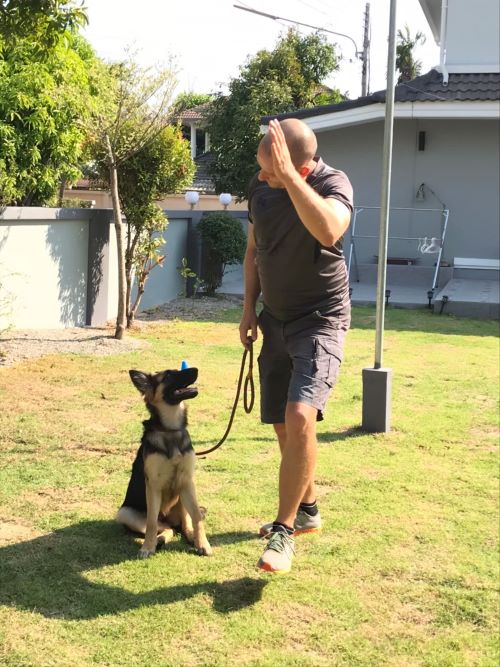
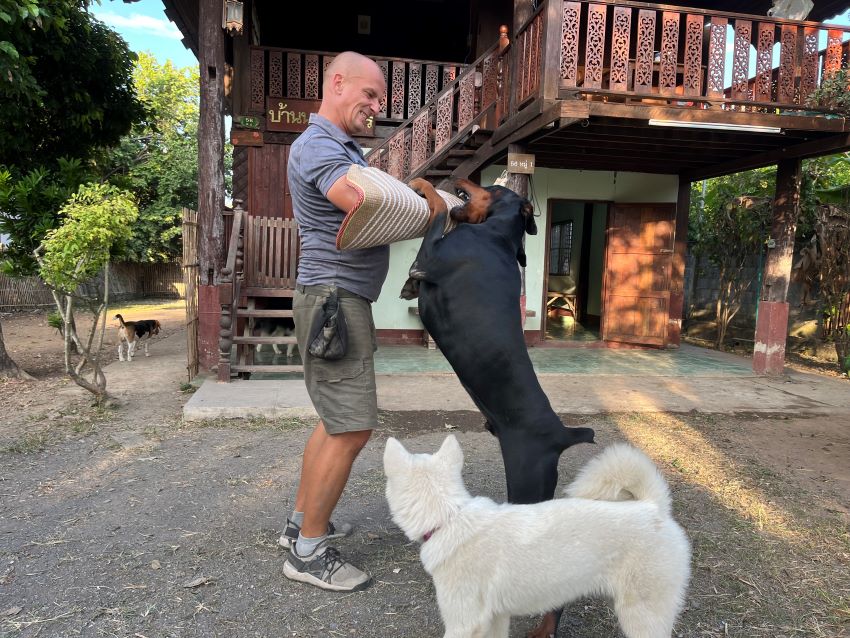
Build a Deeper Bond
When you understand what drives your dog’s actions, you train better, live calmer, and connect stronger. Psychology-based training leads to more joy, fewer struggles, and a relationship built on trust—not tension.
Expressing With Their Bodies
Dogs are always “speaking” with their posture, tail, ears, and faces. Learning to read these signals offers clarity of information about how your dog feels.
- Tail position: A high, wagging tail can mean excitement or curiosity, while a tail tucked low signals fear or submission.
- Ears: Erect ears show alertness. Flattened ears may mean worry or being scared.
- Posture: A relaxed body means calmness; stiffening or crouching often shows unease.
- Facial expressions: Soft eyes and a loose mouth suggest contentment. A wrinkled muzzle or showing teeth can mean distress.
Understanding Human Cues
Here’s an amazing fact: dogs don’t just “talk,” they listen, too. They’re experts at reading human gestures, like pointing or making eye contact. Many dogs can even learn the meaning of words and simple symbols. Experiments show they can match objects or actions with certain signs, highlighting their impressive ability to connect across species.
Recognizing your dog’s communication can strengthen your bond and prevent stressful situations. By tuning in to both their sounds and signals, you support a happier, more harmonious relationship.
Behavioral Development and Personality
Understanding how dogs grow and develop their personality is a valuable insight for every dog owner. Let’s explore what shapes a dog’s behavior and why early experiences matter so much. 🐾
Critical periods in puppy development
Puppies go through crucial windows of development, known as critical periods, when their brains and bodies are most open to learning new things.
- The first few weeks (from 3 to 12 weeks of age) are especially important for socialization. During this time, puppies learn how to interact with people, other dogs, and their environment.
- Skills learned during these periods, such as bite inhibition and tolerance to handling, are easier to acquire and become part of their lifelong behavior.
Missing out on positive experiences in this early stage can cause long-lasting fears or anxiety. For example, dogs not exposed to various sights, sounds, or friendly people early on may become fearful or reactive as adults. This is why many trainers and vets highlight the value of puppy socialization classes.
The role of genetics and breed tendencies
Genetics have a strong influence on a dog’s temperament and personality. Different breeds were developed for specific tasks, so you might notice herding breeds like Border Collies are more alert and need lots of stimulation, while retrievers tend to be more social and eager to please.
However, every dog is an individual. Even within a breed, there’s a lot of variation. That means personality is not set in stone by a dog’s breed alone.
Early socialization and environment
The environment plays a big part in shaping a dog’s personality. Puppies raised in a calm, enriched setting with exposure to different situations, sights, and gentle people tend to be more confident. Experiences like meeting other friendly dogs or exploring new places help build resilience.
A dog that grows up in an isolated or chaotic environment may develop anxiety or struggle to adapt to new experiences. Consistency, positive interactions, and gentle guidance are key for building good habits and emotional stability.
By understanding these building blocks of development and personality, you can create a foundation for a well-adjusted, happy dog. When you see your furry friend learning and discovering the world, know that your influence and support matter every day.

Common Psychological Disorders in Dogs
Recognizing Anxiety Disorders
Many dogs face anxiety, just like people do. You might notice your dog becoming upset when left alone (separation anxiety), reacting to loud noises or certain situations (phobias), or showing signs of ongoing stress (generalized anxiety). Here are signs to look for:
- Whining, barking, or howling
- Destructive chewing or digging
- Excessive licking or pacing
- Restlessness or trembling
Anxiety often appears because of past trauma, lack of socialization, or sudden changes at home. It’s comforting to know that compassionate support and structure from you can help ease these feelings for your dog.
Understanding Aggression
Aggression in dogs is a complex issue. Not all aggression is the same, and its causes can vary:
- Fear aggression: The dog lashes out when scared.
- Territorial aggression: Protecting home or family members.
- Learned aggression: Behavior reinforced by experience.
Aggression may look like growling, snapping, or biting. Before judging a dog as “bad,” consider their feelings—fear, pain, or confusion could be behind it. A gentle, consistent approach and avoiding punishment are key to progress.
Compulsive Behaviors and Emotional Dysregulation
Sometimes dogs develop repetitive, compulsive actions, such as:
- Chasing their own tails
- Excessive paw licking
- Persistent barking with no clear reason
These behaviors can signal deep stress, boredom, or even a chemical imbalance in the brain. Emotional dysregulation also may appear as signs of depression or overexcitement.
Behavioral therapy—like desensitization, counter-conditioning, and positive reinforcement—can make a big difference. Enriching your dog’s daily life with activities, routine, and loving attention supports their mental health.
Noticing these patterns early allows you to seek supportive guidance, ensuring your dog can thrive. Empathy, patience, and understanding turn challenges into opportunities for growth and connection.
The Human Influence on Dog Psychology
How Your Actions and Emotions Shape Your Dog
Your dog’s emotional world is deeply connected to your own. Dogs are experts at picking up on the feelings and behaviors of their people. Have you ever noticed how your pup seems more excited when you are happy, or anxious when you are stressed? This is not just a coincidence—your personality, moods, and actions are key signals your dog often mirrors. When you approach your dog with calm energy and patience, you inspire the same feelings in them. Conversely, unpredictable or tense habits can lead to anxious or confused dogs.
Creating a routine, offering gentle guidance, and providing consistent affection builds your dog’s sense of safety. On the flip side, if you’re often frustrated or rushed, your dog may take on those emotions, too. Consider how your behavior changes your dog’s day-to-day experience—and know that your supportive guidance can foster confidence and happiness.
The Danger of Anthropomorphism
It can be tempting to think your dog feels or reasons exactly like a human. However, dogs have their own ways of seeing the world. Anthropomorphism (treating animals as if they’re little people with human intentions) can cause misunderstandings. For example, an “apologetic” dog after an accident is not feeling guilt in the human sense but is reacting to your tone and body language. This misinterpretation can lead to frustration on both sides and can unintentionally reinforce unwanted behavior.
By learning to decode your dog’s real forms of communication—body language, vocalizations, and context—you gain valuable insights into their true needs.
Building a Supportive Relationship
The bond you share with your dog thrives on empathy and consistency. When you treat your dog as a unique individual, not a furry child, you create a relationship built on clarity and trust.
Here are a few ways to foster a healthy connection:
- Use positive reinforcement—celebrate good behavior instead of punishing mistakes.
- Keep daily routines to lower your dog’s stress and boost confidence.
- Stay observant and learn how your dog signals joy, stress, or anxiety.
- Encourage enrichment and play, offering both mental and emotional support.
By understanding the human side of the partnership, you create an environment where your dog can truly flourish—with wagging tails and relaxed hearts.
Next, we’ll explore practical applications of dog psychology in training and everyday life.
Practical Applications of Dog Psychology
Psychology-Informed Training: Positive Reinforcement
Understanding dog psychology helps make training more effective and enjoyable for both of you. Positive reinforcement is a key training method based on operant conditioning. If your dog sits when asked and then gets a treat or a happy “Good dog!,” they are more likely to repeat that behavior. Rewards can be food, play, praise, or petting—whatever your dog finds motivating.
Let’s say your dog struggles with coming when called. Instead of scolding when they don’t listen, reward them every time they respond. This approach builds trust and keeps your dog motivated, helping them learn faster and with less stress.
Addressing Behavioral Issues with Empathy
Dogs act out for many reasons—maybe they feel anxious when alone or bark because they’re scared. The key is to look for the emotion behind the action. Consider your dog’s emotional world: is there stress, boredom, or a need for comfort? If your dog chews things when you’re gone, it may mean separation anxiety. Helping with puzzles, calming words, or gentle routines lowers their anxiety and supports better behavior.
Recognizing signs like pacing, whining, or licking can also point to emotional distress. Addressing these feelings—not just the behavior—leads to lasting change and a happier pup.
Enrichment Activities for Mental Well-Being
Dogs are thinkers—they love solving simple problems and exploring. Enrichment boosts your dog’s mental health and helps avoid boredom and frustration. Try hiding treats inside toys, creating scent games, or teaching new tricks. Short training sessions or puzzle toys keep their minds active. Going for walks in new places or letting your dog sniff around longer adds valuable stimulation.
By using these psychology-driven approaches, you support your dog’s brain and emotional needs. With patience, consistency, and lots of encouragement, your relationship will grow stronger and your dog’s well-being will soar.
Now that you know how to put this knowledge to good use, your understanding of your dog’s world will only deepen from here. 🐾
Conclusion: Creating a Harmonious Relationship
Key lessons from understanding your dog
Building a happy life with your dog goes far beyond basic care. You now know that dogs think, feel, and bond with us in meaningful ways. By learning about their needs and emotions, you unlock a more joyful, peaceful bond. Consider how this can make your daily life easier—and your dog’s world richer.
- Dogs experience emotions such as fear, joy, anxiety, and even jealousy.
- They learn by watching us, repeating behaviors that bring rewards, and forming strong attachments much like young children.
- Their understanding of our cues, both spoken and through body language, is remarkable.
- Behavioral issues and mental health needs in dogs are real. Recognizing anxiety, aggression, or stress early on allows you to offer supportive guidance and get professional help, just as you would for a family member.
The heart of the human-dog connection
At the core, a harmonious relationship is powered by empathy and respect. Your actions, moods, and routines shape your dog’s behavior and confidence. Mirroring your calmness and kindness, they thrive when they feel safe, loved, and understood. Avoid the temptation to treat your dog as you would a person—dogs communicate differently, and reading their cues accurately is key.
Some simple ways to show support include:
- Practicing positive reinforcement—reward good behavior with treats or praise.
- Offering daily mental and physical enrichment, like puzzle toys or new walking routes.
- Being patient if your dog struggles with stress, and reaching out to a vet or trainer if problems seem big.
- Maintaining consistent routines for mealtimes, walks, and rest.
Where to find more support and guidance
If you want to dive deeper, valuable insights are available from veterinarians, certified dog trainers, and animal behaviorists. Many communities also offer support groups and online resources focused on dog psychology and welfare. Remember, you’re not alone on this journey.
Empathy, clear communication, and supportive guidance will help you and your dog build a relationship full of trust and shared joy. Every moment you invest pays off in lifelong happiness for your four-legged friend—and for you!

